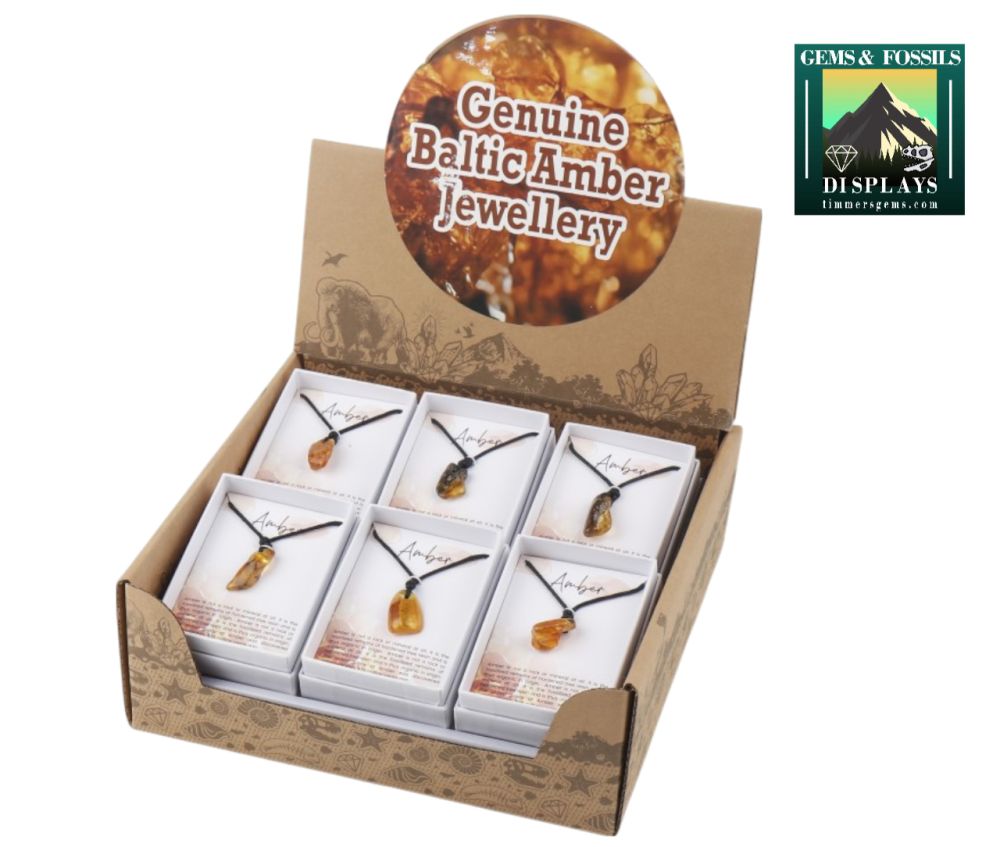We use cookies to make your experience better.
TimmersGems has a new website, existing customers also need to register again.
Amber pendant on a chain. Packed with 12 pieces in a display. (price per piece)
The jewellery, whether it's amber or copal, is beautifully presented. This jewellery is ideal for displaying on a counter.
SKU
122435
Amber (incorrectly also called amber) is a fossil resin that comes from conifers. These trees were often referred to by the scientific species name Pinus succinifera, a still-living pine species. The resin dripped from the trees millions of years ago and then petrified. Amber dates from the Mesozoic to the Quaternary. Amber is usually warm yellow to dark red in colour, but there are also more green, blue, or even black-coloured varieties. Transparent amber is generally considered the most beautiful and is the most valuable. Mineralogically speaking, amber has an amorphous structure. It is quite soft; the hardness is 2-2.5. The word "amber"—in German, "Bernstein"—comes from the Low Saxon word "börnen," which means "to burn." Indeed, this semi-precious stone is flammable. Amber is called amber in English. In Dutch, amber usually refers to the colour amber. A substance from the intestines of the sperm whale is also called amber. This substance has a strong smell and is used in perfumes. The fact that many insects are found in amber did not escape the attention of the Romans either. They explained this (correctly) by assuming that amber was liquid when it covered the insects. Therefore, they called the stone succinum, or gum stone. The name still occurs today in succinic acid, in the scientific name for the pine species Pinus succinifera, and also in succinite, a name given by James Dwight Dana to a certain type of amber that comes from the Baltic Sea region. A common group of land snails are the amber snails. They are so named because of the amber-yellow colour of the snail shell. The scientific name of an amber snail species is Succinea putris. Amber is electrically charged by rubbing it along an animal's fur. For this reason, the term "electricity" is derived from the Greek word for amber, "elektron" (Latin: "electrum"). In Greek mythology, the god Helios one day let his son Phaëthon drive the sun chariot. But Phaëthon could not control the horses, causing the sun to scorch heaven and earth. This is how the people of Ethiopia got their dark colour. To save the earth, Zeus throws his thunderbolt at Phaëthon, causing him to fall to the earth dead. Phaëthon's sisters, the Heliades, mourn him. Their tears drip down and solidify into amber. The Greek mythological figure Electra is identified with amber. The Greek word for amber is "elektron" (ηλεκτρον), from which our word "electricity" comes, because according to the Greeks, amber came from the amber islands located at the mouth of the legendary Amber River in the far North, the Eridanos.
| Dimensions | Divers |
|---|---|
| Country of Manufacture | China |












